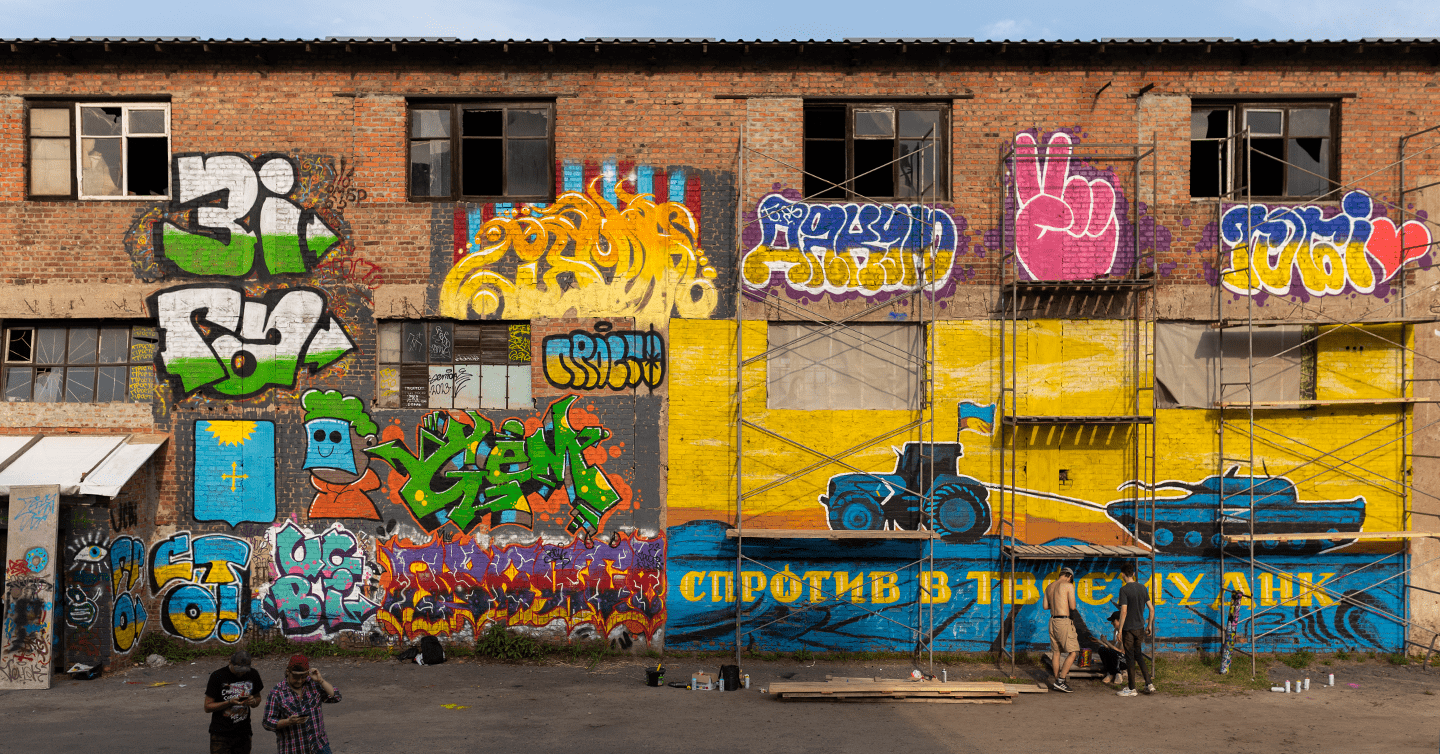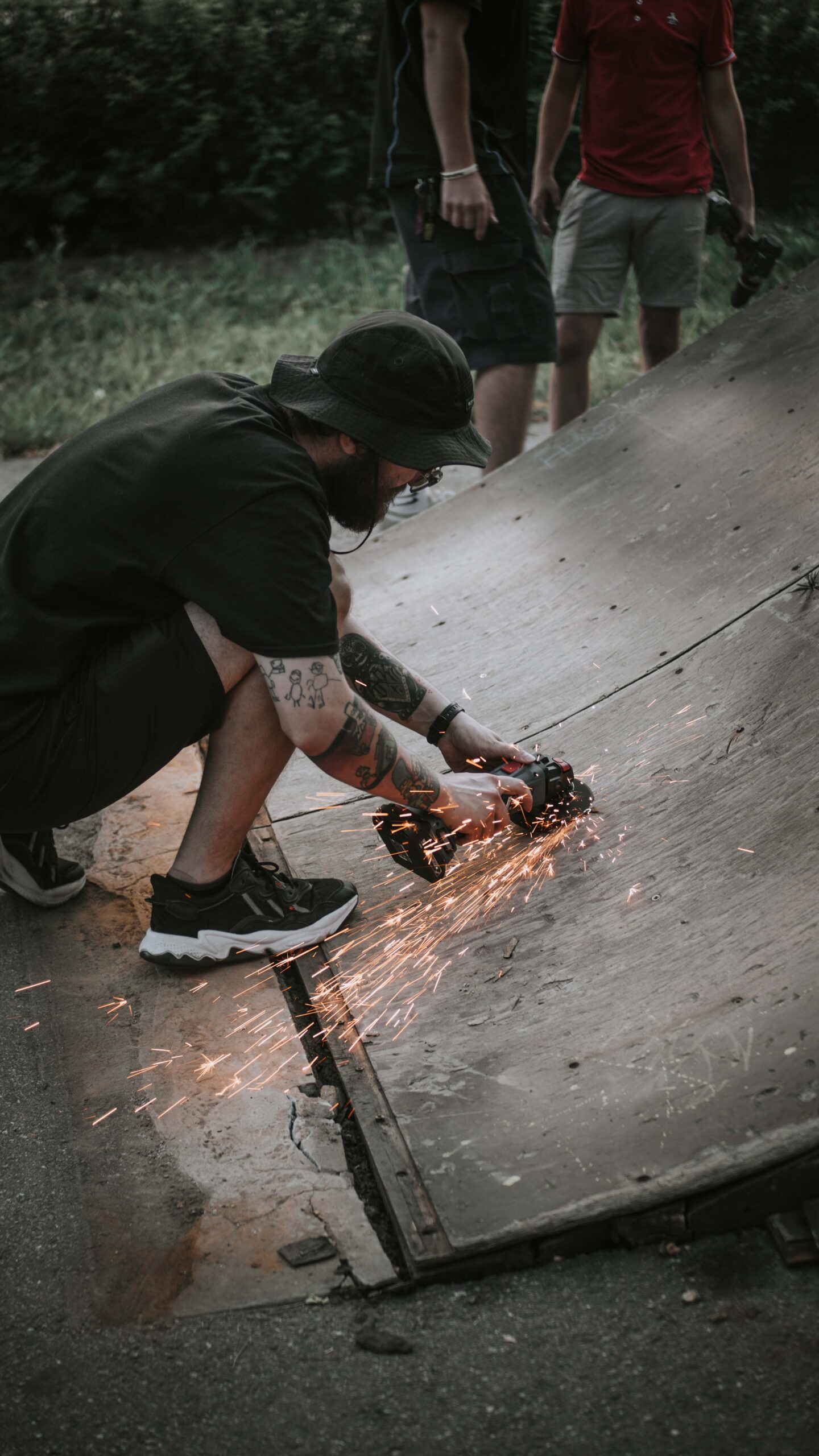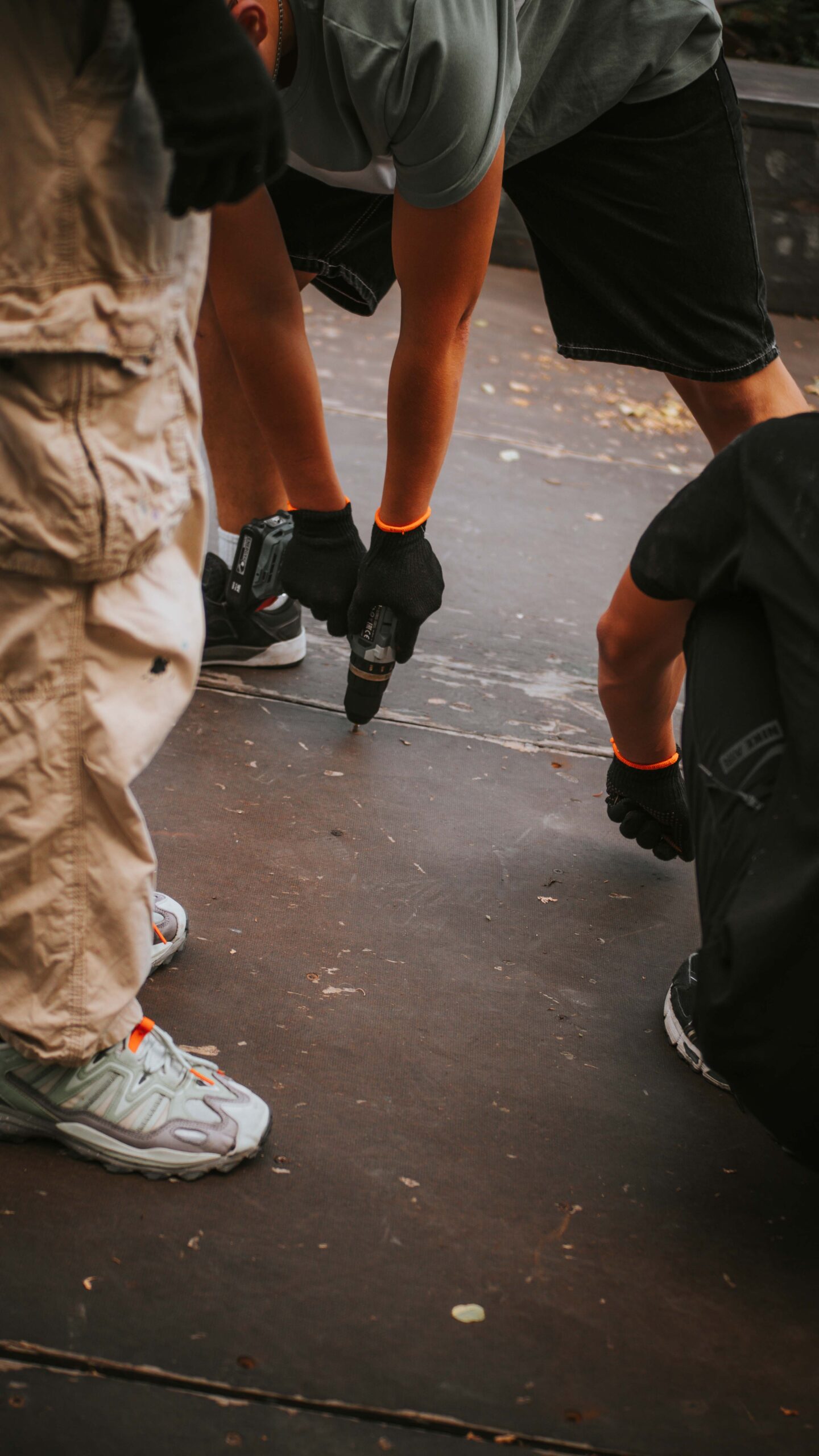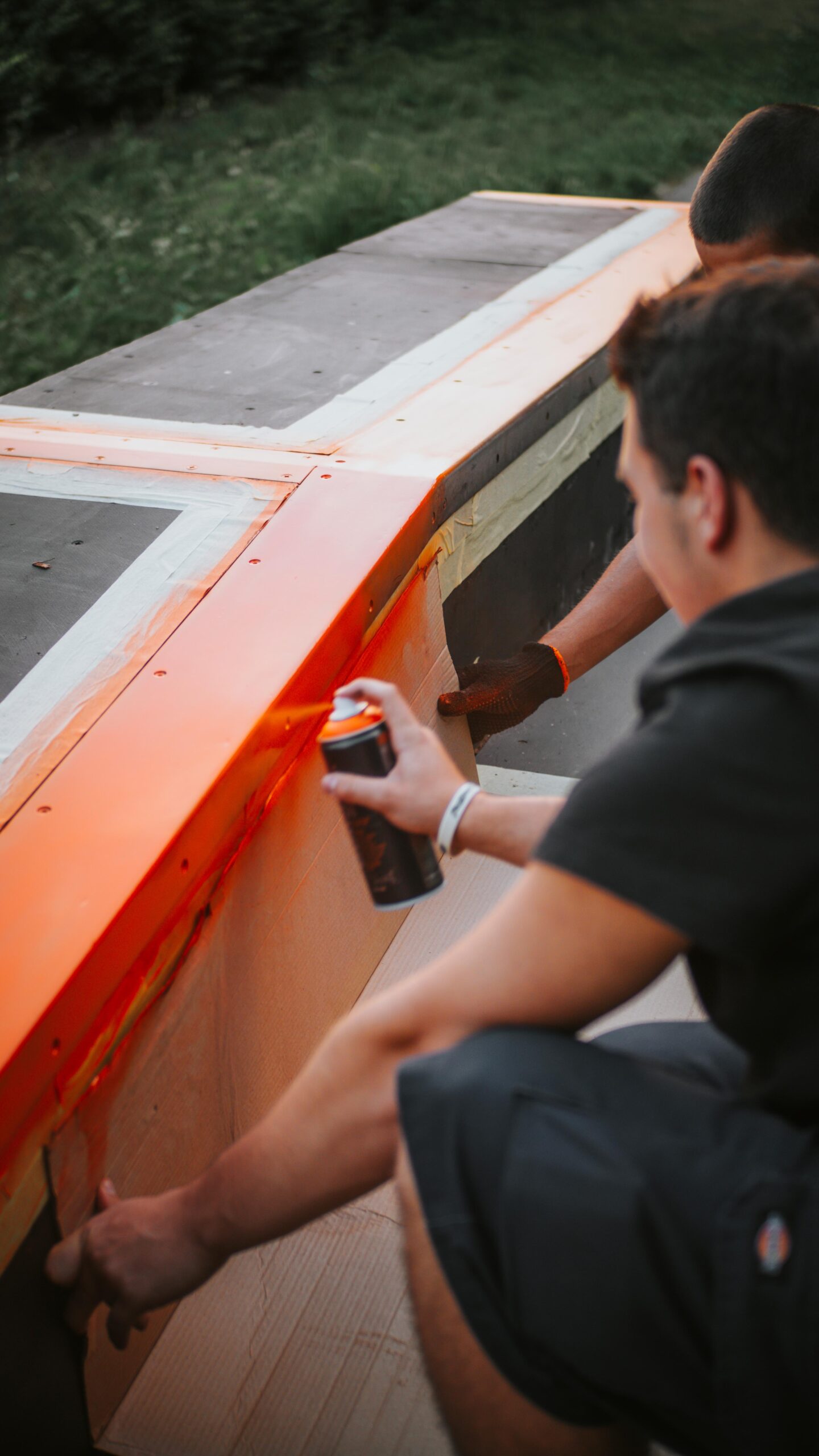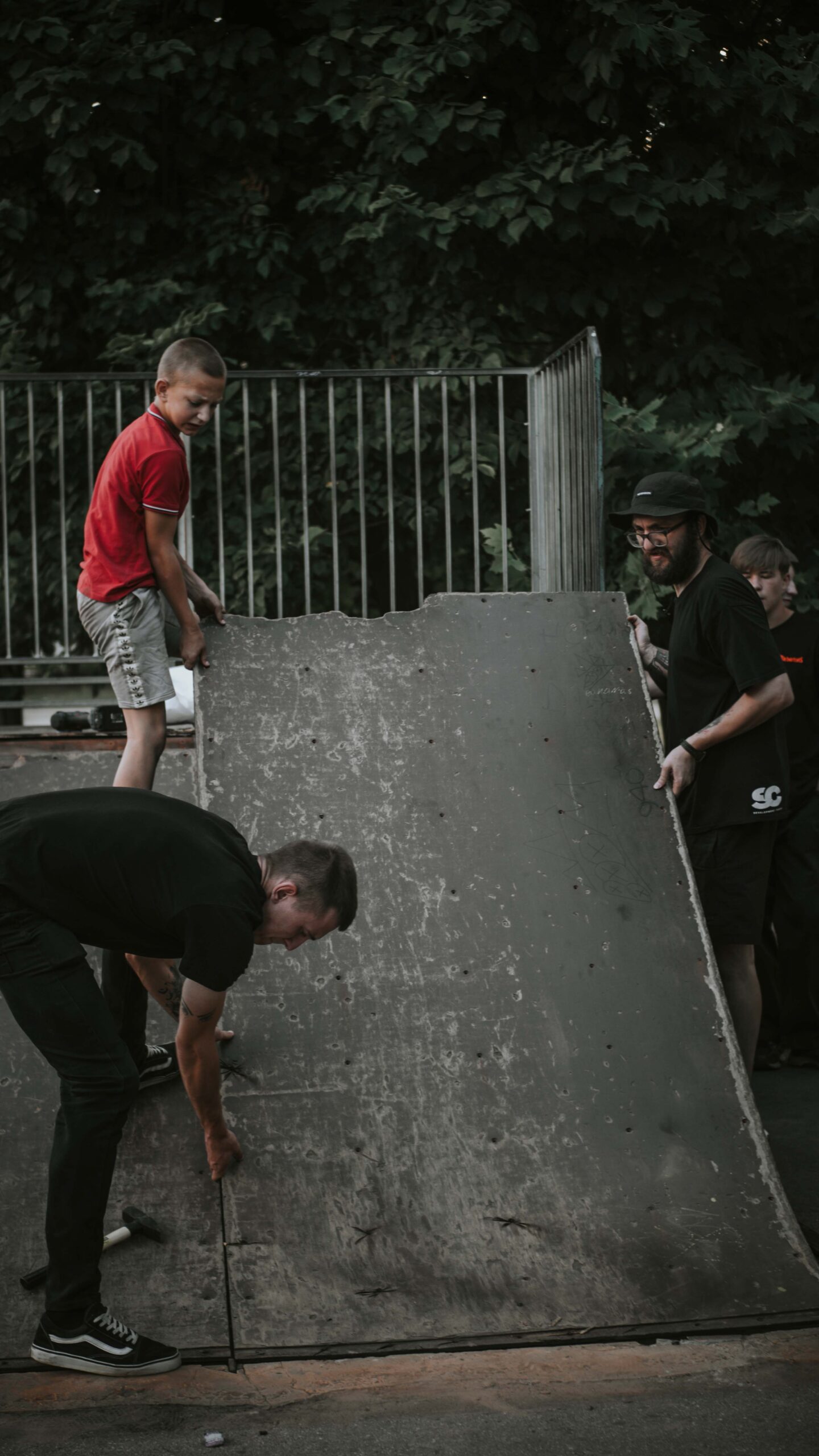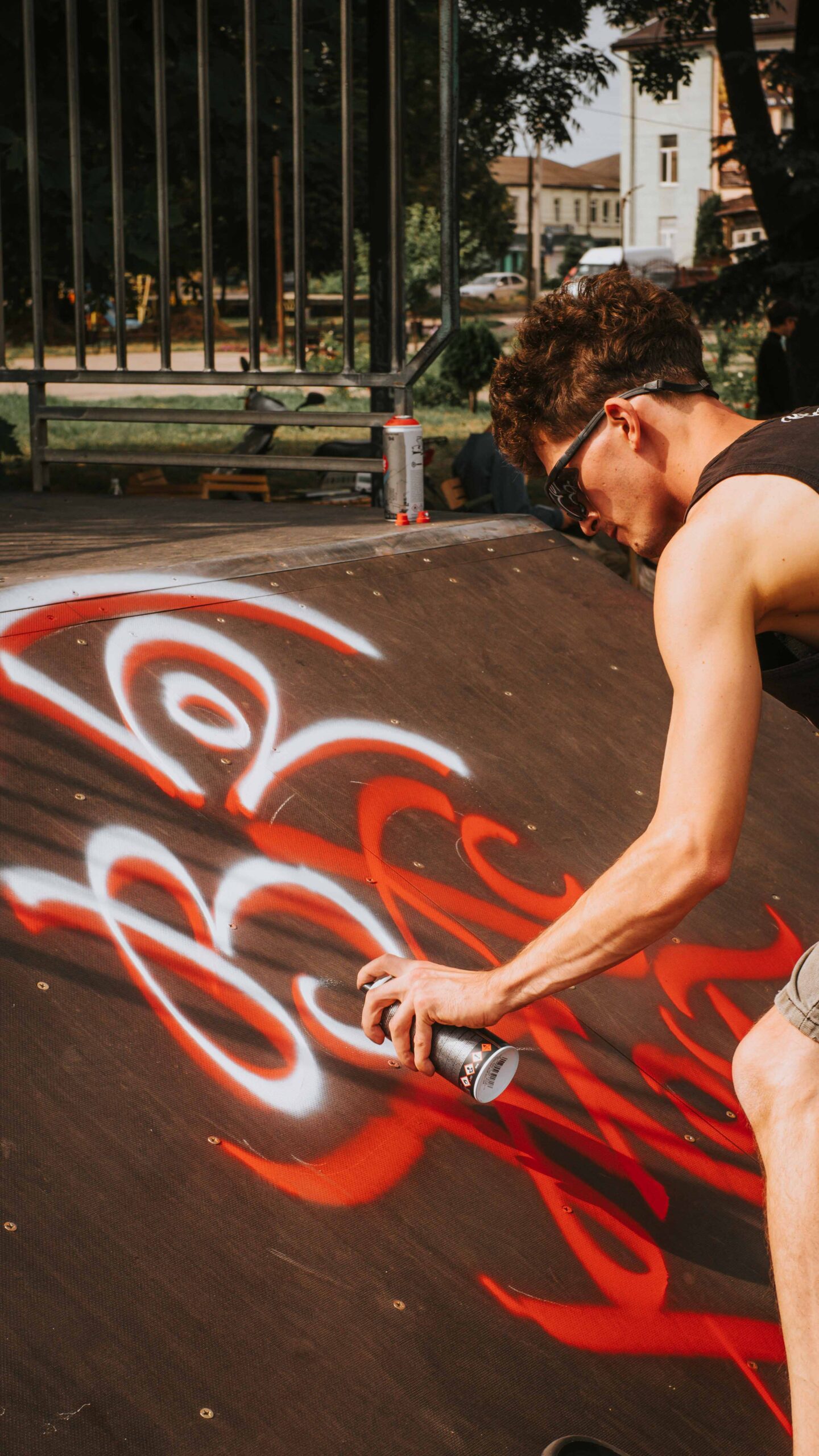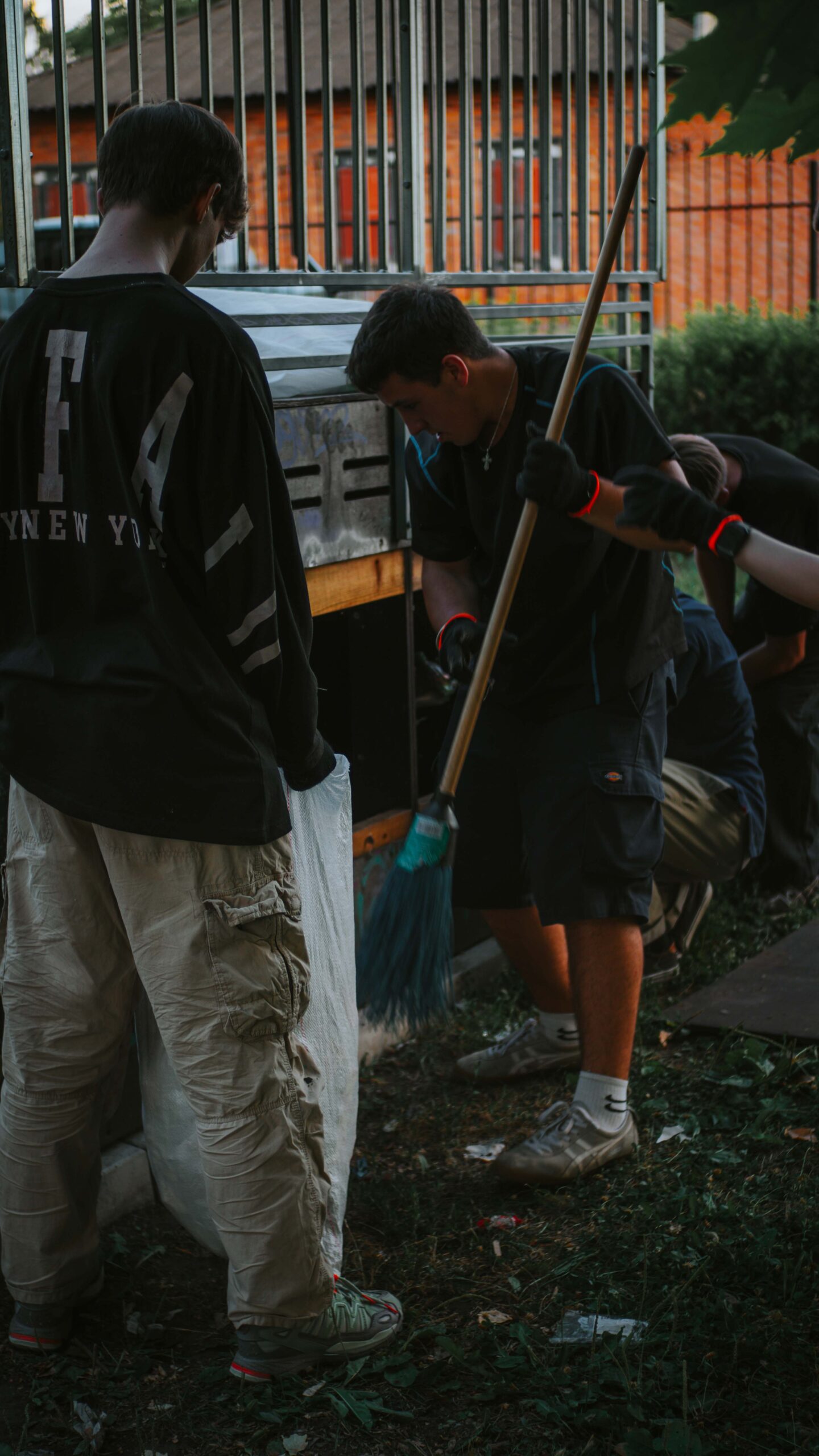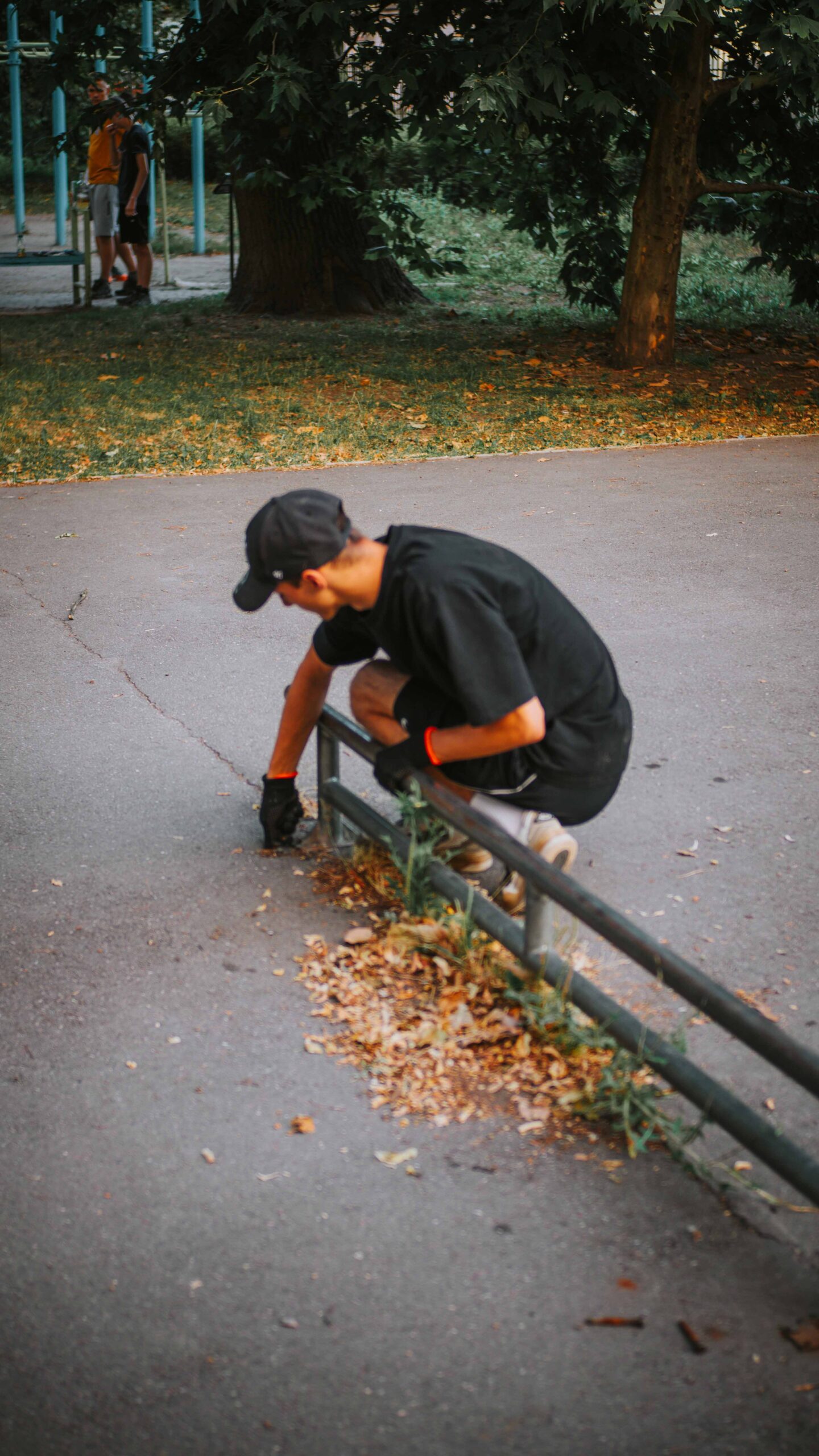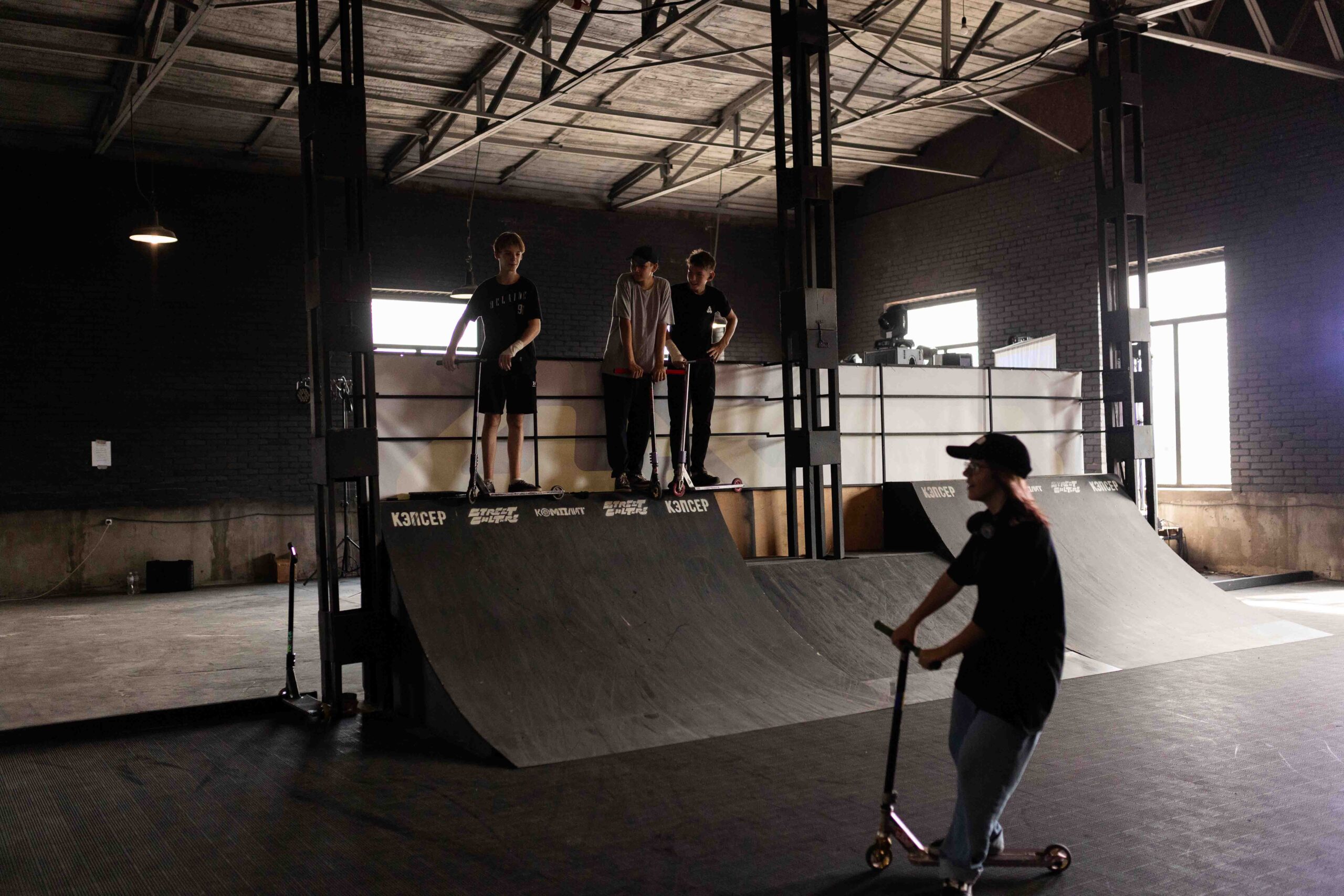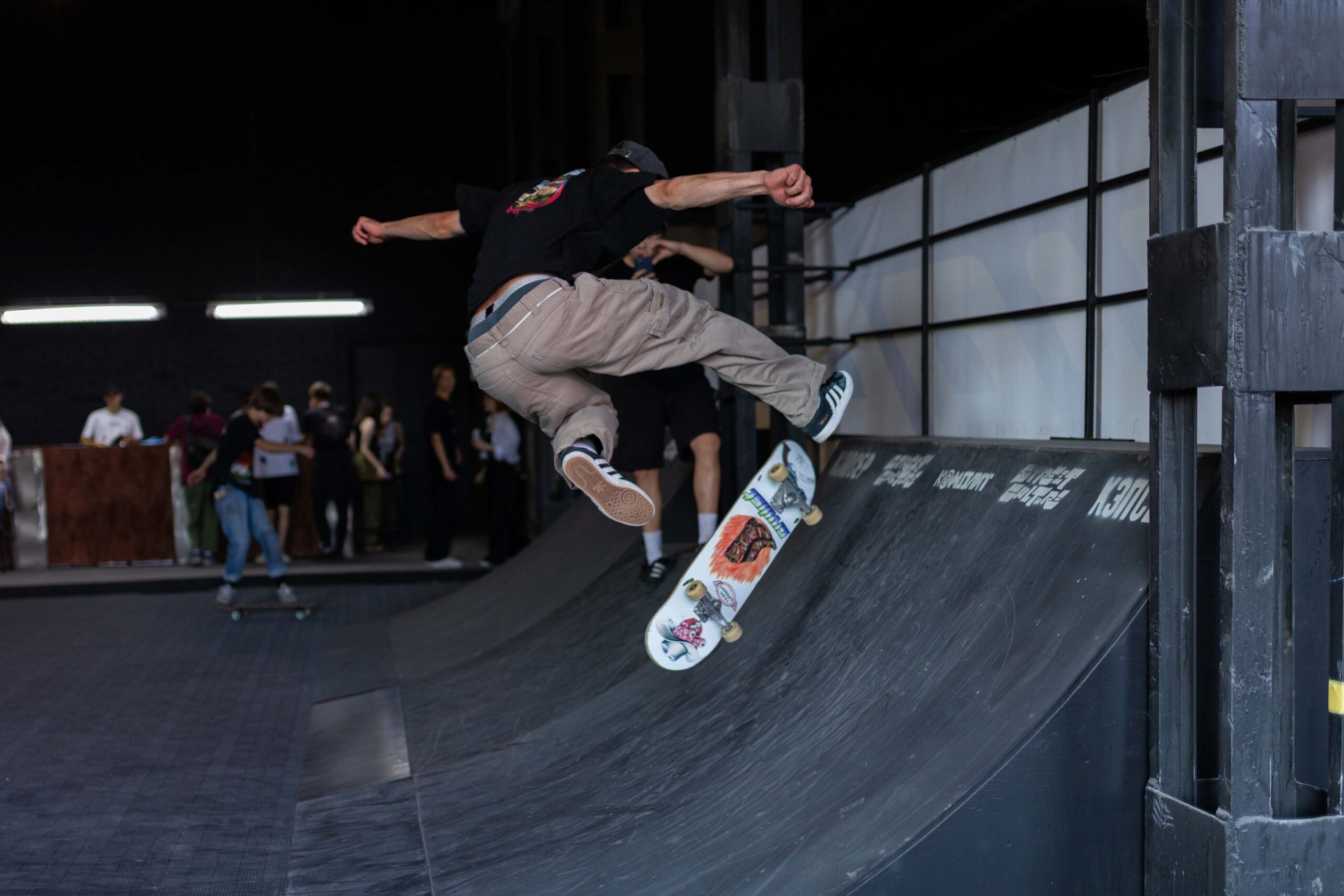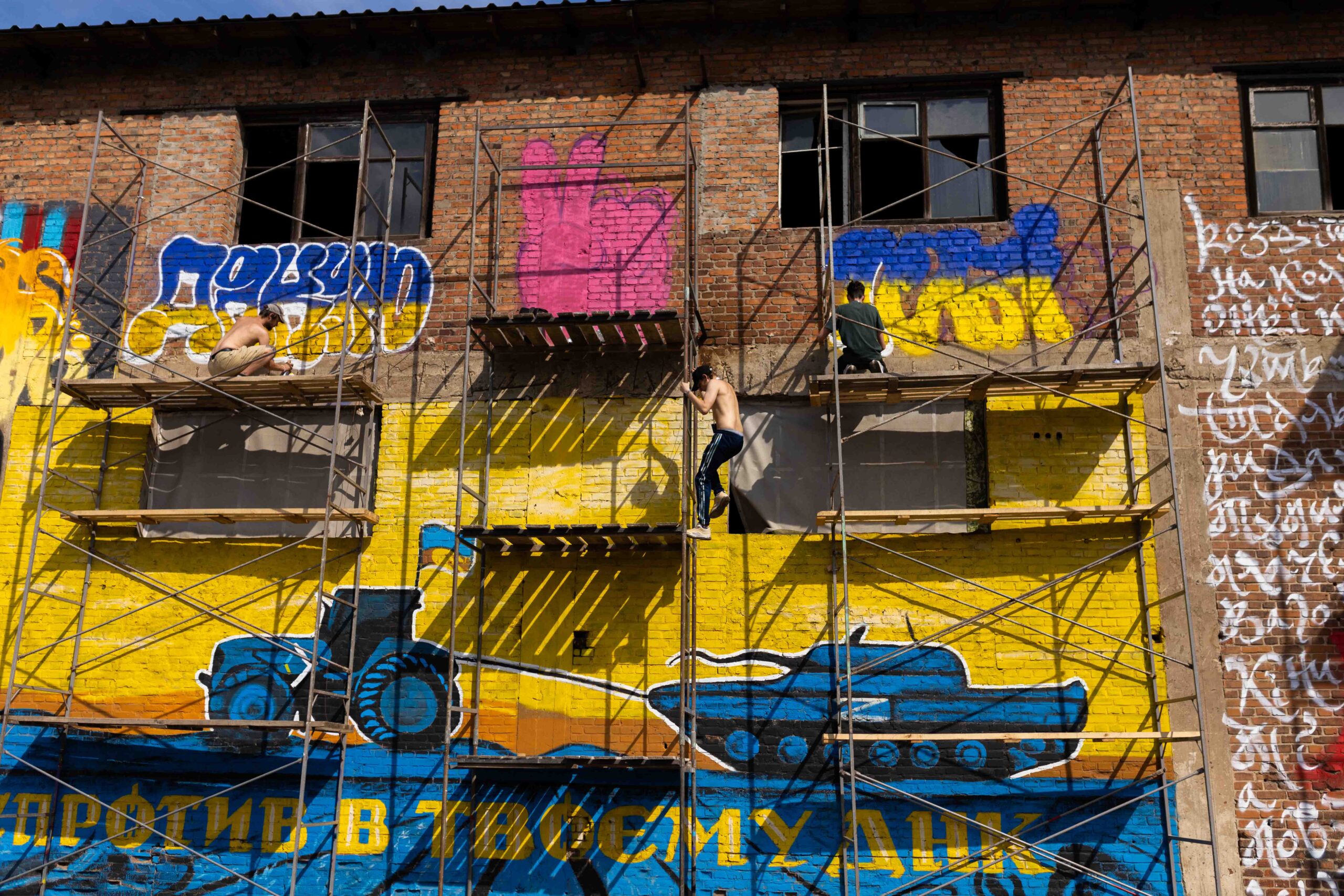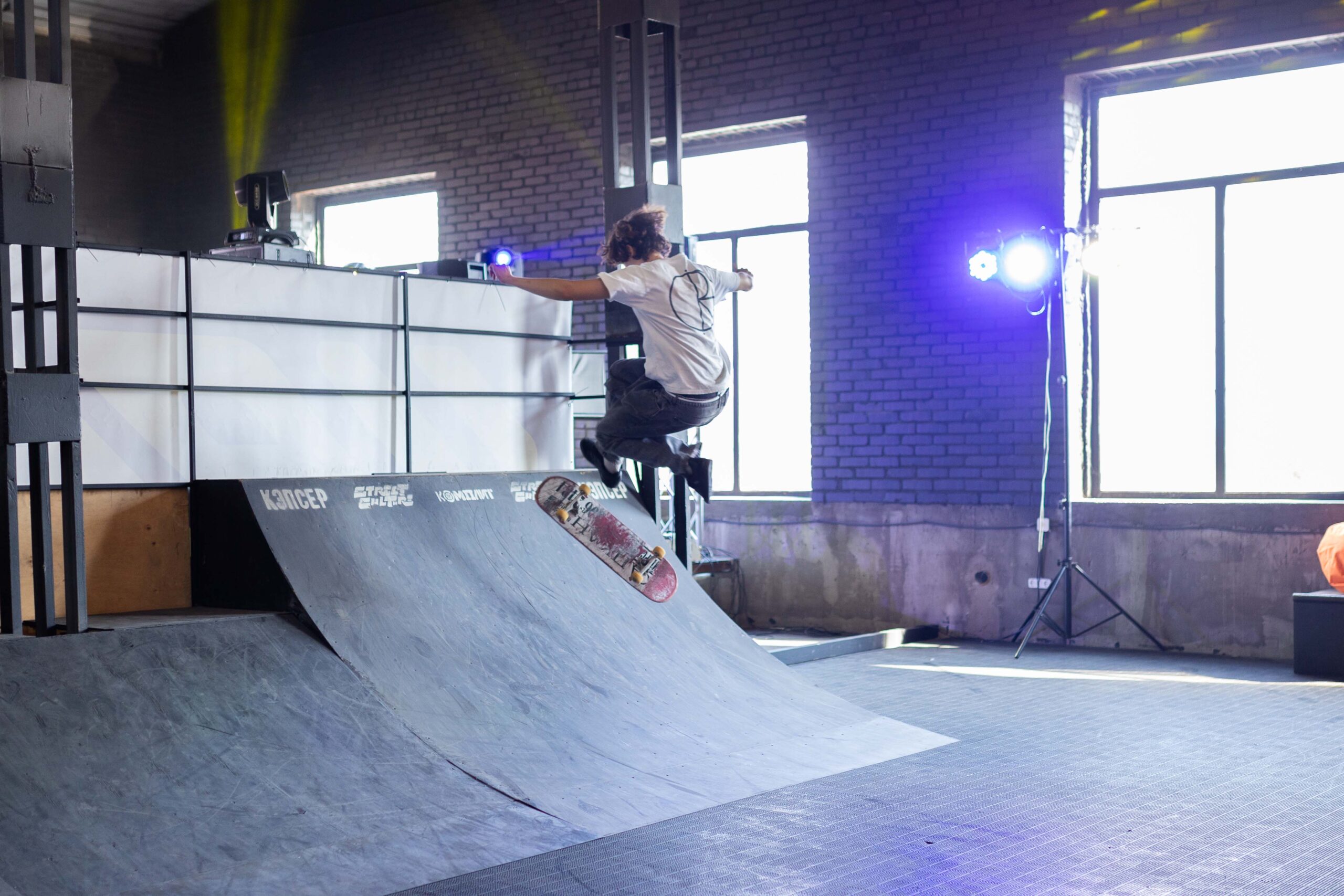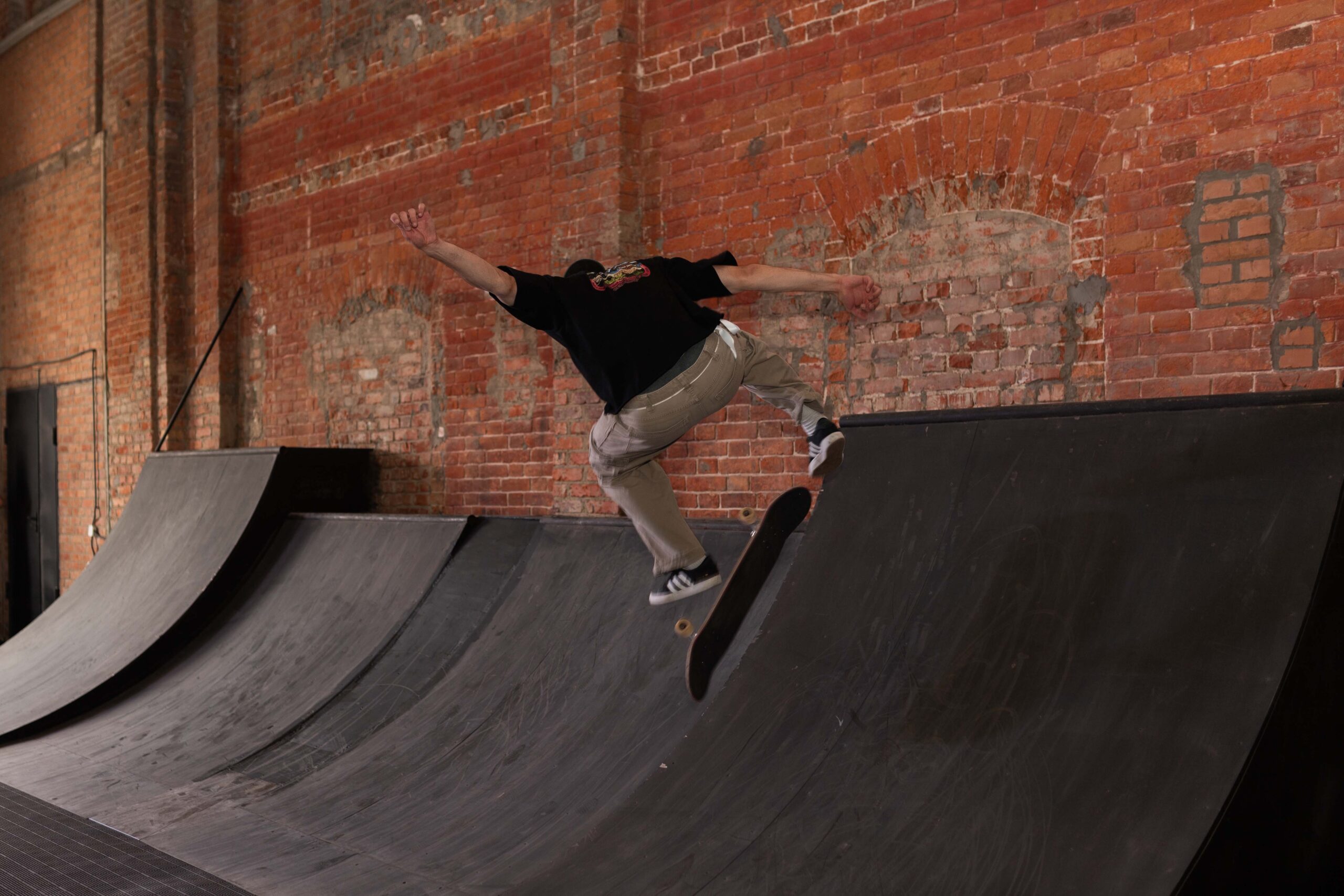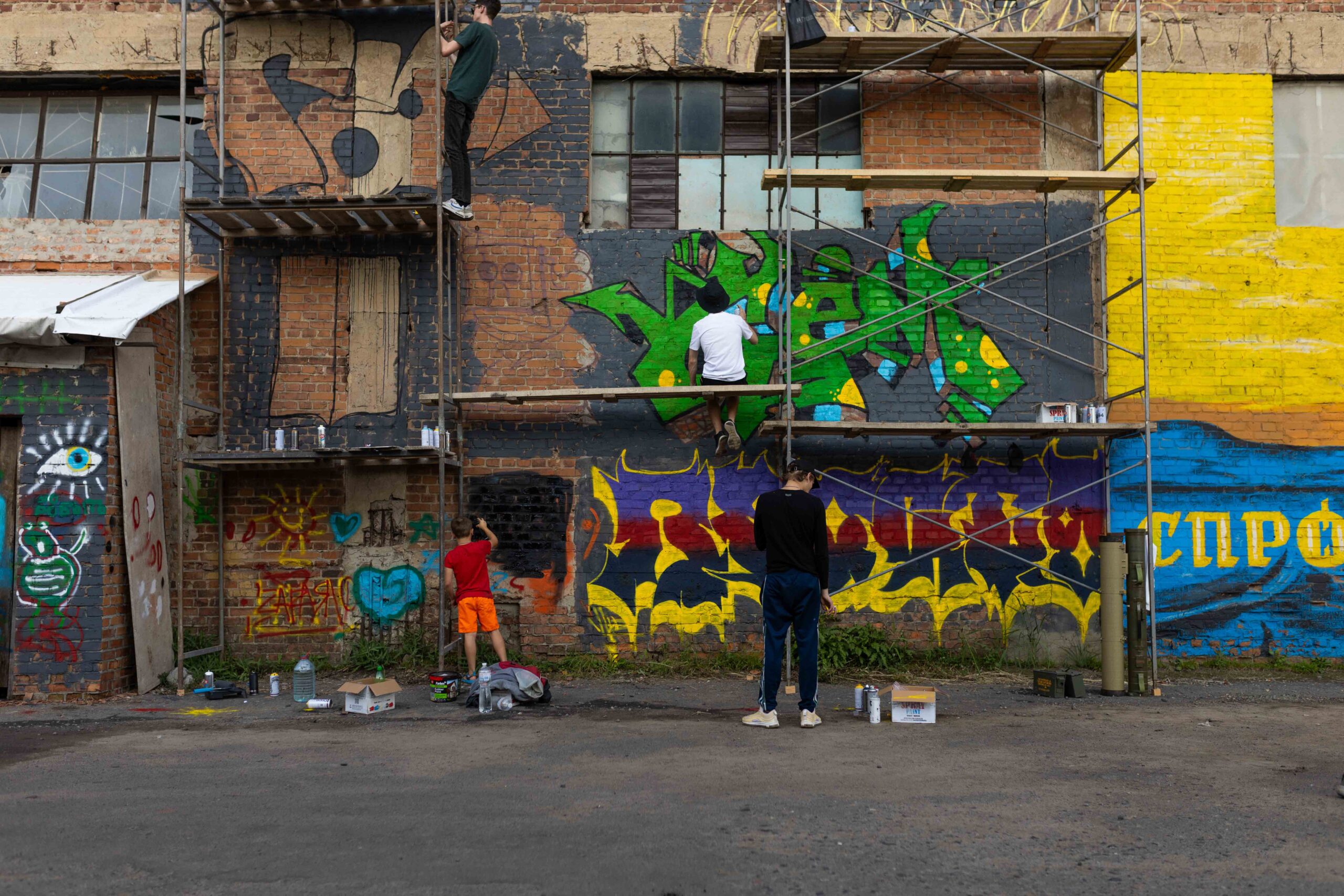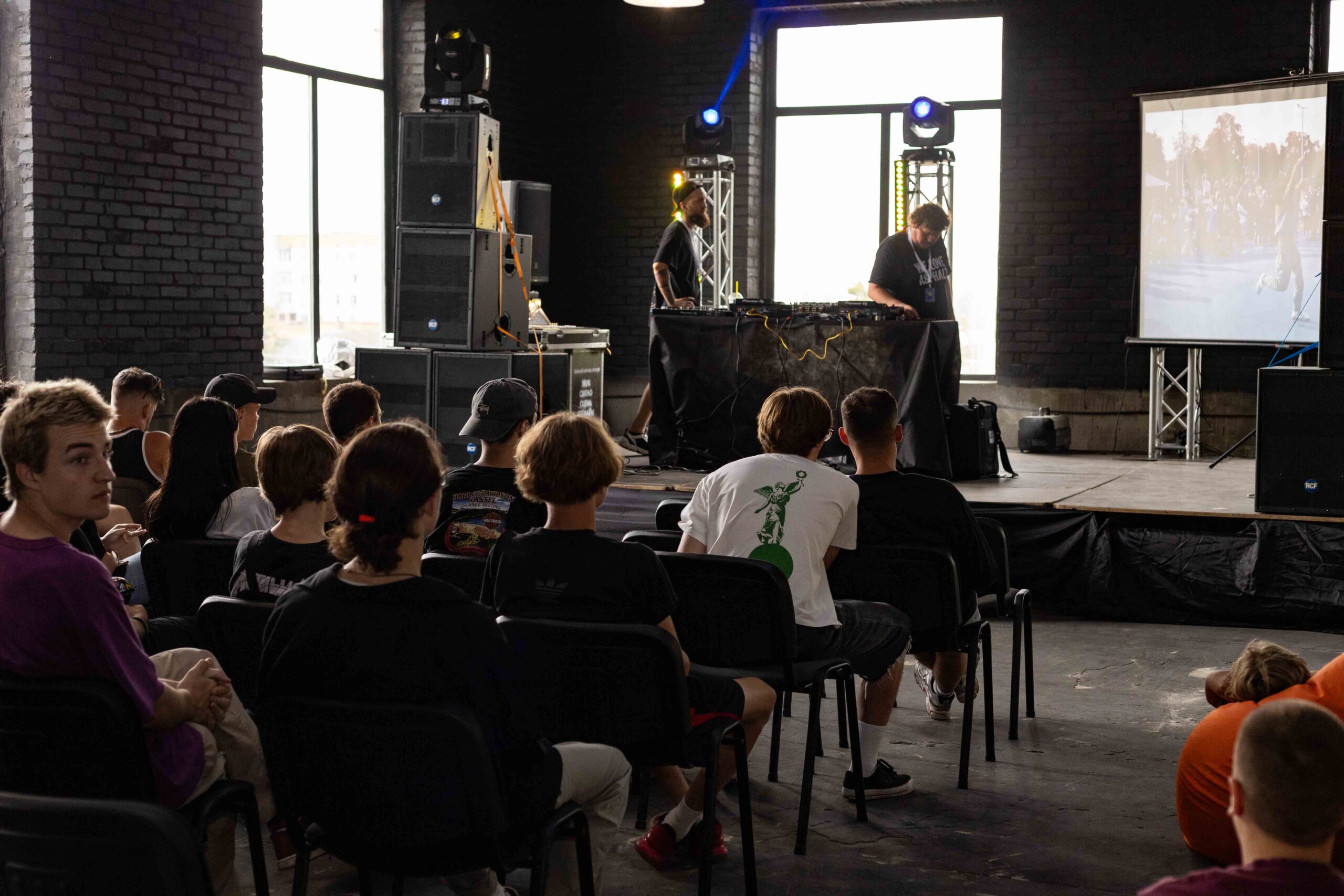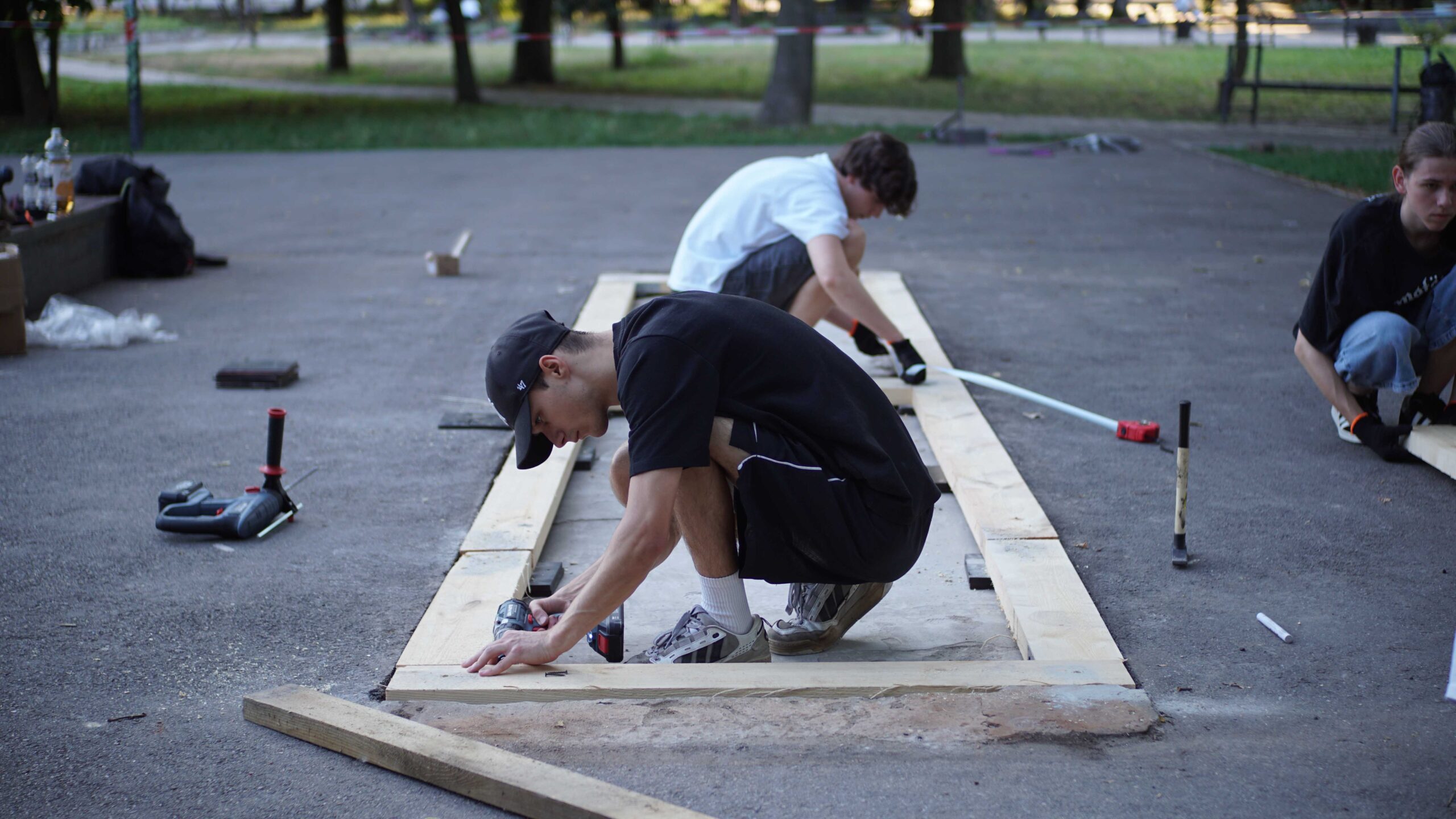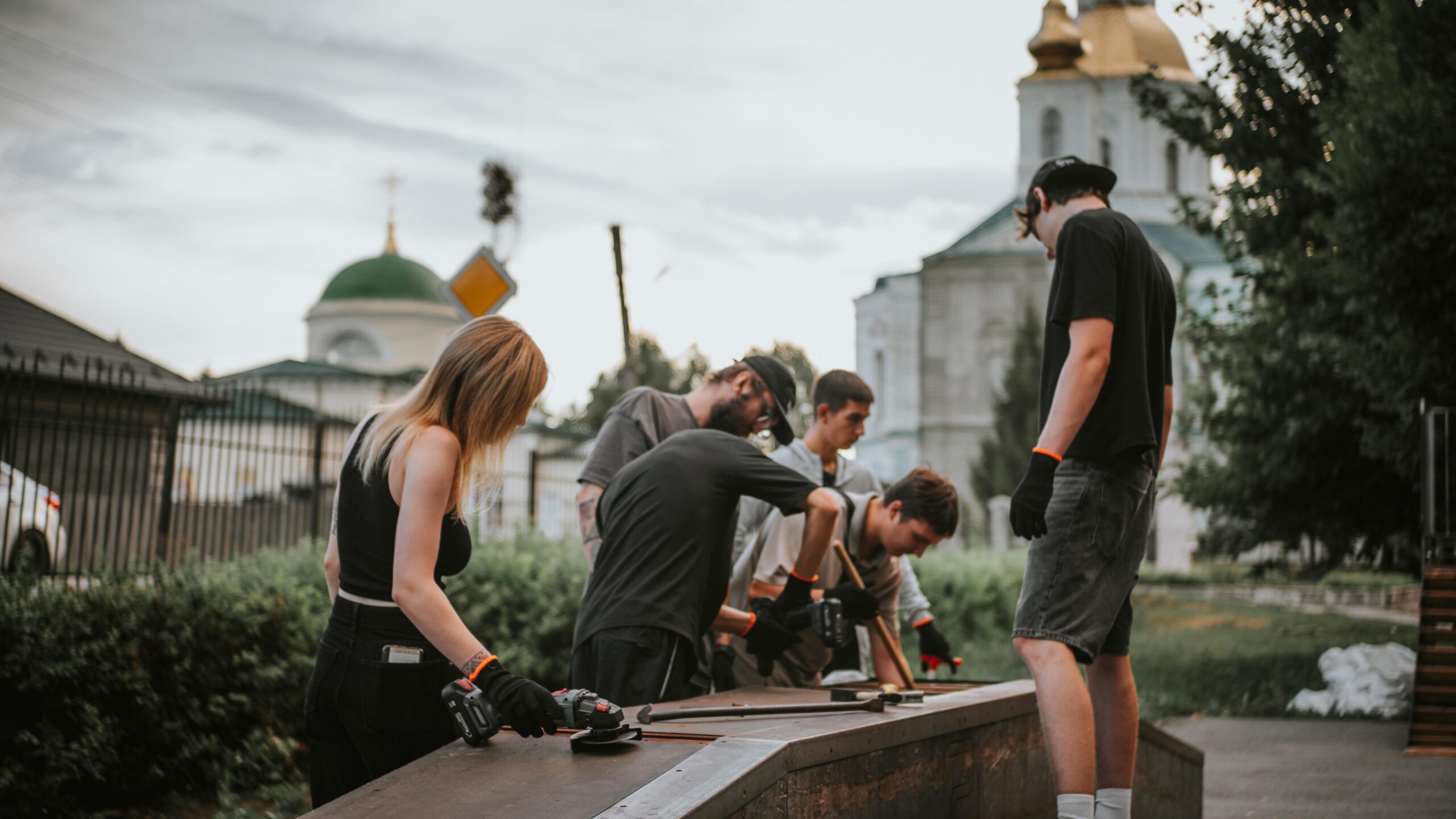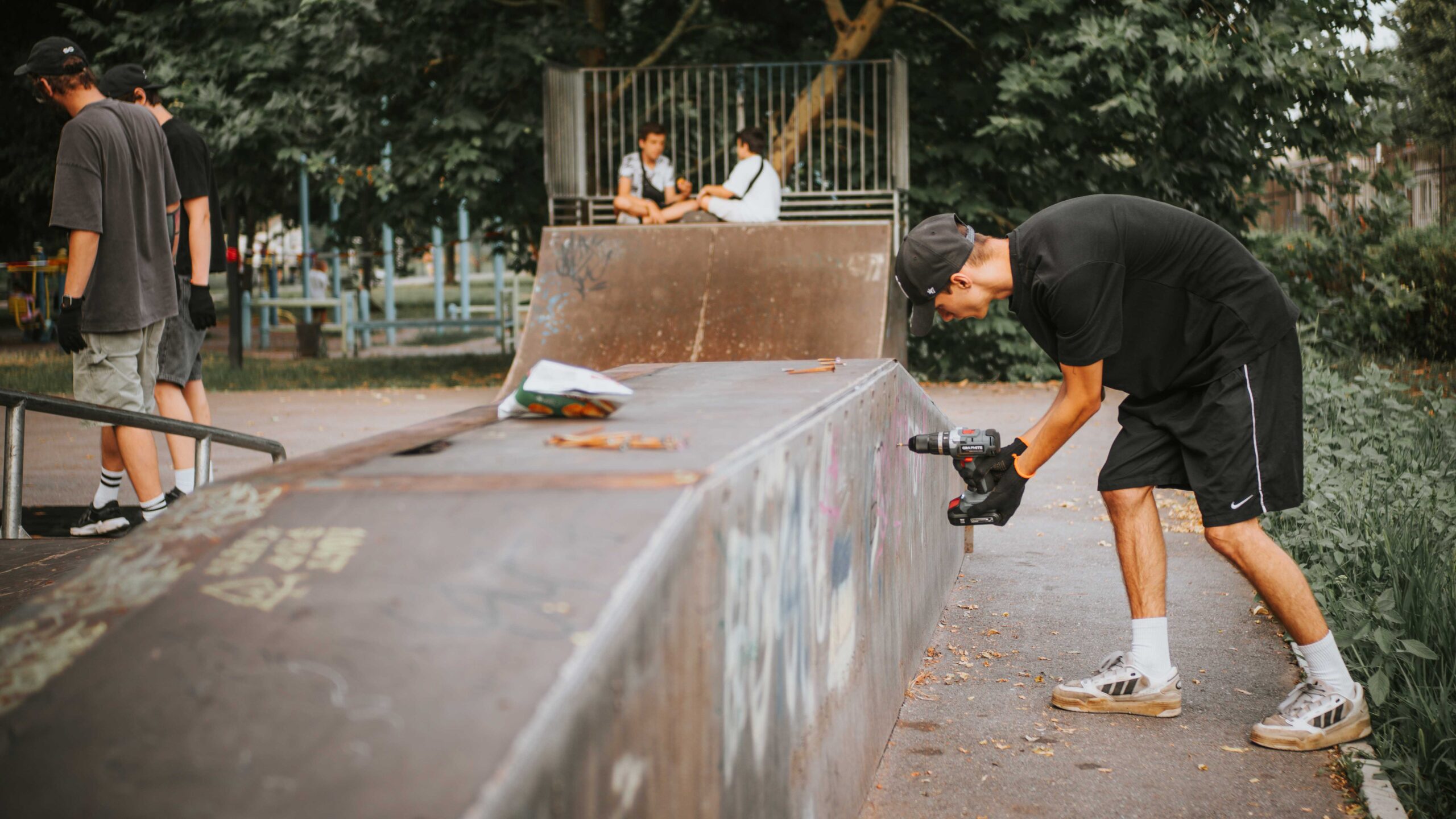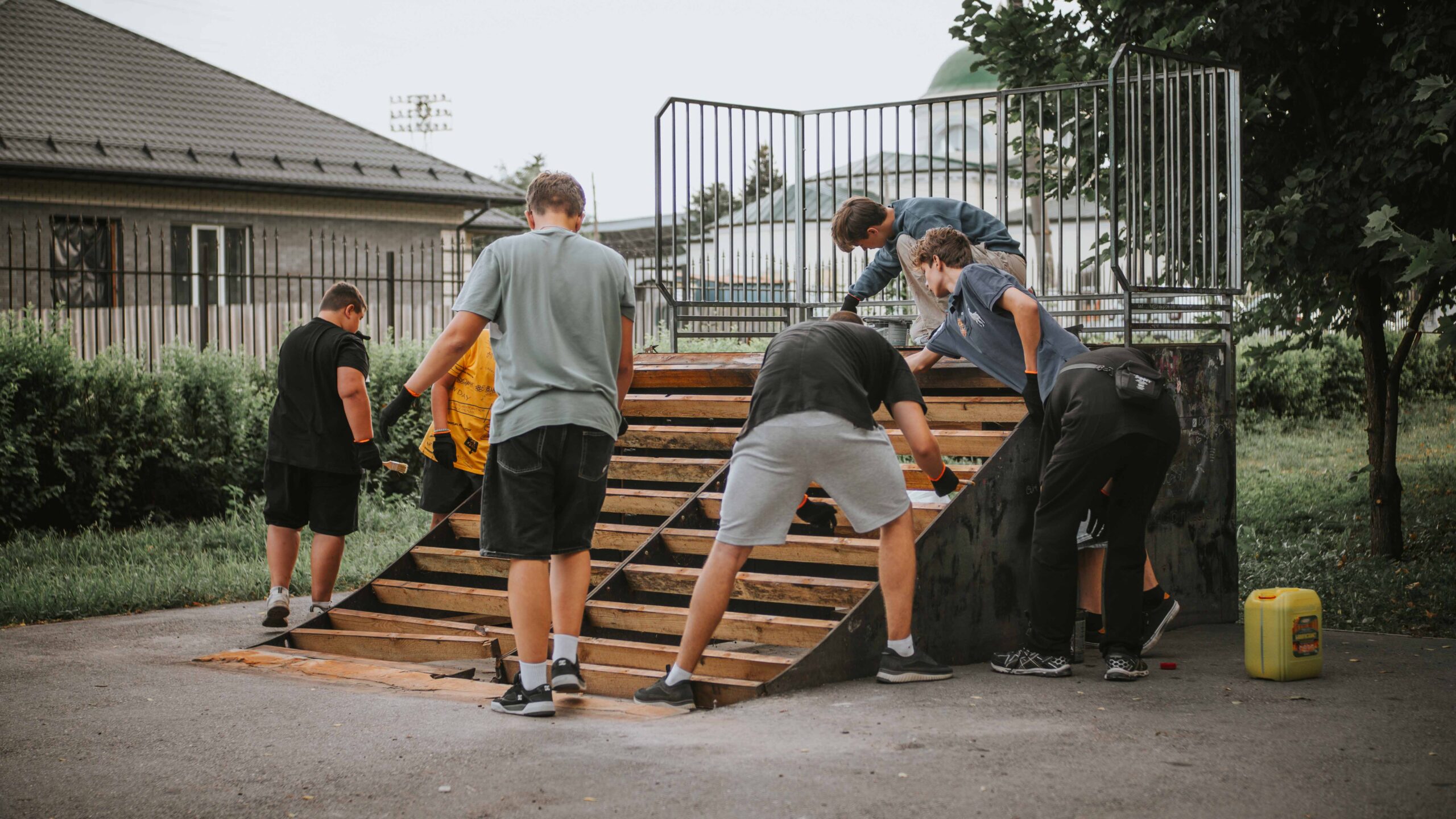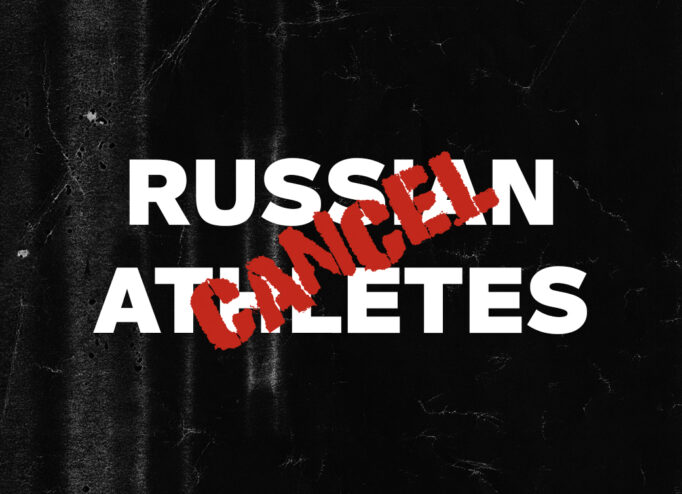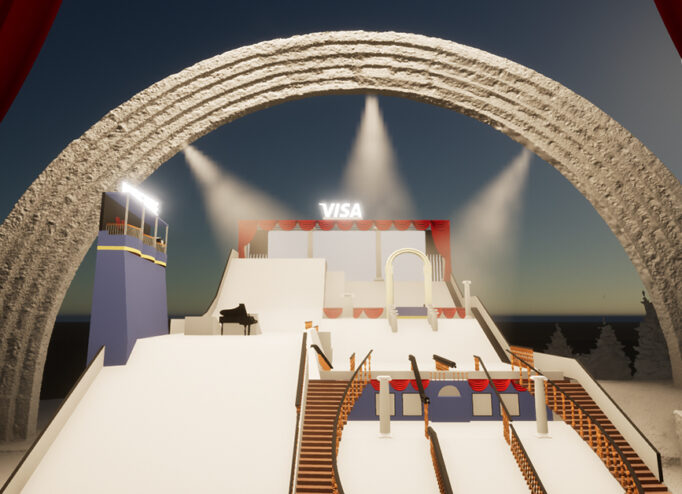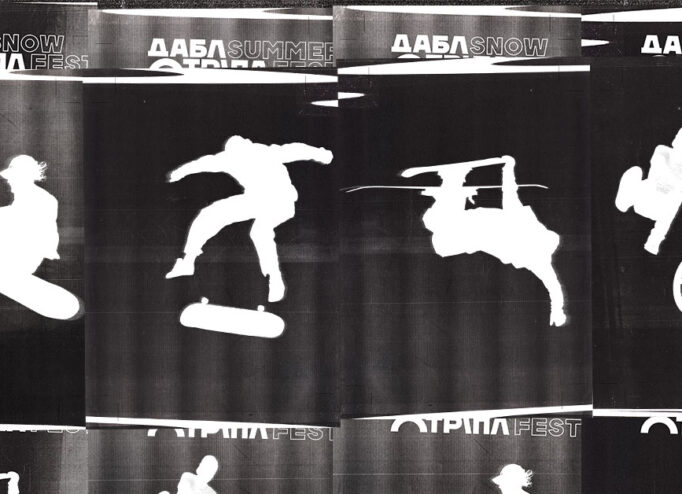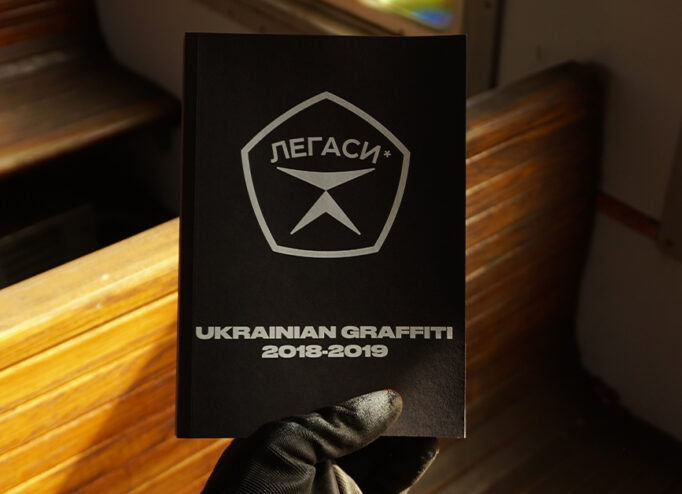In August, the Okhtyrka community Street Cultures Okhtyrka presented a mini-film dedicated to the process of creating the local skatepark Krytka. Street Cultures Okhtyrka is the only organization in the frontline town that is engaged in the development of street cultures and, in particular, the organization of festivals and contests. DTF Magazine talked to Pavlo Ihnatenko, one of the community members, and he tells you about the skatepark and the street community in general in Okhtyrka
About the idea of creating a skatepark
Krytka is the largest, but not the first skatepark built in Okhtyrka by the community. In 2018, they created a separate skate zone in the local park on Batiuka Street. According to Pavlo, this ‘became the impetus for the creation of a skate community in the city’, and the park served as a platform for workshops, competitions, and skate film screenings.
In addition, the community decided to undertake the process of building a separate specialized space for representatives of street cultures, including skateboarding, namely Krytka. They created it gradually over the course of 2023-2024.
‘Since the start of the full-scale war, riders have moved away, so there are not many people left in the city who could pass on their skills to the new generation, — Pavlo Ihnatenko says. — The remaining young people want to develop themselves and develop their city. They are passionate about what they do, they hold classes in Okhtyrka, they are looking for resources to continue training, and this is a very good example for other cities in Ukraine and around the world’.
About the construction process
The skatepark is located on the territory of the former Okhtyrka Agricultural Machinery Plant, in a historic building in the city center.
Pavlo says that they started the construction processes back in 2018. They had to build the park from scratch, ‘from bleaching the furniture to the sinks in the bathrooms, which a friend of the community made out of concrete’. According to Ihnatenko, the only specialist they asked for help from was a welder, he helped them create the furniture structures, and everything else was made by the community.
‘We persuaded the guys from Kharkiv to give us the first ramps at one of the contests, then we found money for their transportation and lifted it all to the second floor. Then we updated and finished them ourselves…. We knew what we wanted to see there, but we didn’t understand how it should look like in the final. We were very inspired by Kyiv’s Nyzhnioiurkivska Street and the Kablis space in Vilnius’.
Pasha adds that the team realized from the beginning that it should be a versatile space for young people: ‘One day it should be a screening or party room, the next day it should be a venue for skateboard competitions or a table tennis tournament’.
‘Everything was built with our resources and finances. Back then, we didn’t even know what a grant was, and we confused it with the word grand. And there were quite few foundations in our region that organized grant programs. It seems to me that in total it took about six years to create the skatepark, but not everything has been completed yet and we are still looking for solutions’, Pavlo explains, adding that the main difficulties are related to heating in the winter season and the floor, which is not quite suitable for skateboards and scooters.
In 2023, the skatepark organized its first event, a street culture festival. Pavlo says: ‘We saw the interest of young people and it became an inspiration to keep working and not to lose heart’.
Now Street Cultures Okhtyrka is working on increasing the number of skatepark elements.
‘We were inspired by the Urban Park at the Expocenter of Ukraine (VDNG) in Kyiv and the ramp that was set up at this year’s ‘Brudnyi pes’ festival. We realize that there is no possibility to buy it, but we can try to make a mini ramp by ourselves’.
About challenges during construction
According to Ihnatenko, the first problem was ‘misunderstanding on the part of the local community’, for whom ‘representatives of the skate or street community are marginalized’. Pasha adds that most of the locals ‘do not even consider the issue of lack of spots where community members can spend their time’.
Already during construction, the community faced funding and resource issues: ‘When everything is done on your own initiative, you kind of stay independent, but you can’t always realize the idea the way it should be’.
‘In general, we realize that we need to keep working and developing the community, and all the other problems will be solved in the future. Maybe not tomorrow, but they will be solved. The worst thing is to lose the community, because then nobody will need the skatepark and the space, and young people will leave the city without seeing the opportunities for their development’.
How the skatepark works
Krytka is open every day from 6:00 p.m. to 10:00 p.m. except Monday, a technical day.
The space operates in an open format, so anyone can come there. There are five complete skateboards that can be borrowed for training, and there is also a table tennis area.
Three times a week Street Cultures Okhtyrka organizes graffiti workshops and periodically — free skateboarding classes.
Thematic film screenings became part of the space, as the team had originally planned. In August, the park hosted a screening of the film ‘British Sounds’ — a documentary about British music and its development in the late 20th century, for which Street Cultures Okhtyrka made a Ukrainian translation. Currently the team is working on the translation of a movie about the skateboarding community of Malmo — Pasha also specified that it was the members of the Swedish community who gave them the skateboards on which they train at Krytka.
About the film
In August 2024 Street Cultures Okhtyrka released a mini-film showing the process of skatepark restoration and presenting the local skate community.
According to Pavlo, with the film, they also wanted ‘to bring awareness to the community in small towns, especially in frontier towns’.
Переглянути цей допис в Instagram
‘For many people, it’s not clear what a skatepark is and why it’s there. But it works even when young people just gather there — it’s their place of strength, it’s a magnet that unites people. And when this magnet is half-destroyed, we can draw conclusions about the community. It was important for us to show Ukraine and the world: if you want your favorite activity to be treated with respect, sometimes you have to take responsibility and show what we are capable of’.
